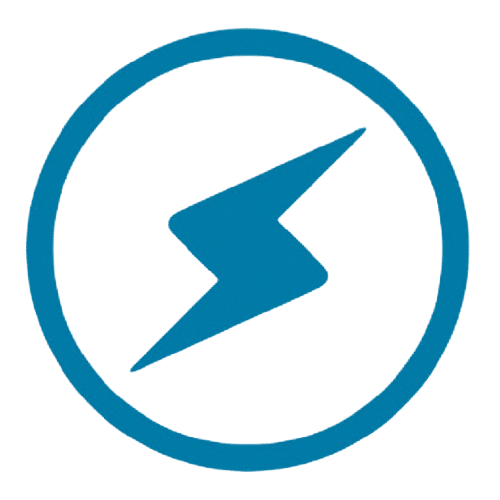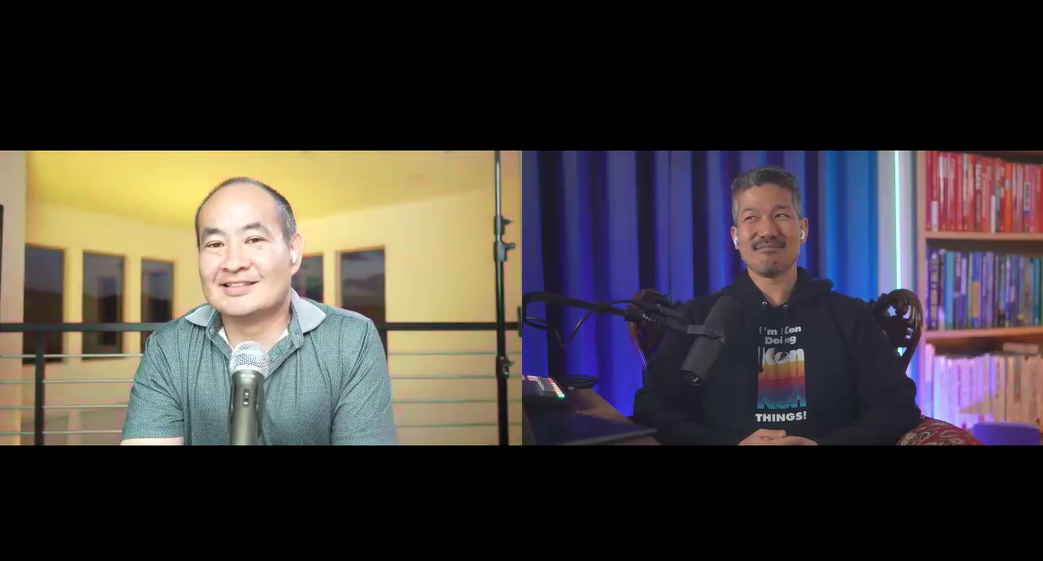
In this Coach Yu Show episode with Ken Okazaki, founder and mastermind behind 20X Agency, we delved into the future of video marketing, optimizing your greatest hits, AI tools, and the challenges agency owners face today.
Ken is a trailblazer in the video marketing space and a trusted strategist for some of the most successful entrepreneurs and businesses.
His approach has garnered attention from entrepreneurs looking to maximize their return on investment through compelling video content and marketing strategies. But what sets Ken apart is not just his technical expertise—it’s his ability to translate complex ideas into simple, actionable strategies that can drive long-term growth.
The Truth Behind Long-Term Success in Content Creation
Starting with the end in mind, I asked Ken—What questions have you not been asked that you wish you were asked?
“When I think a lot of people just want tactics, blueprints, swipe files, and stuff. But once they get that, so many people struggle to maintain what it requires to keep winning,” he started. “So maybe the question is, what does it really take to succeed? How do we balance that desire for instant gratification versus what really works?”
Too often, creators focus on the surface-level tactics—the blueprints, the swipe files, the shortcuts that promise overnight success. But as Ken Okazaki rightly points out, those aren’t the things that lead to lasting results.
Ken has worked with countless creators through his coaching program.
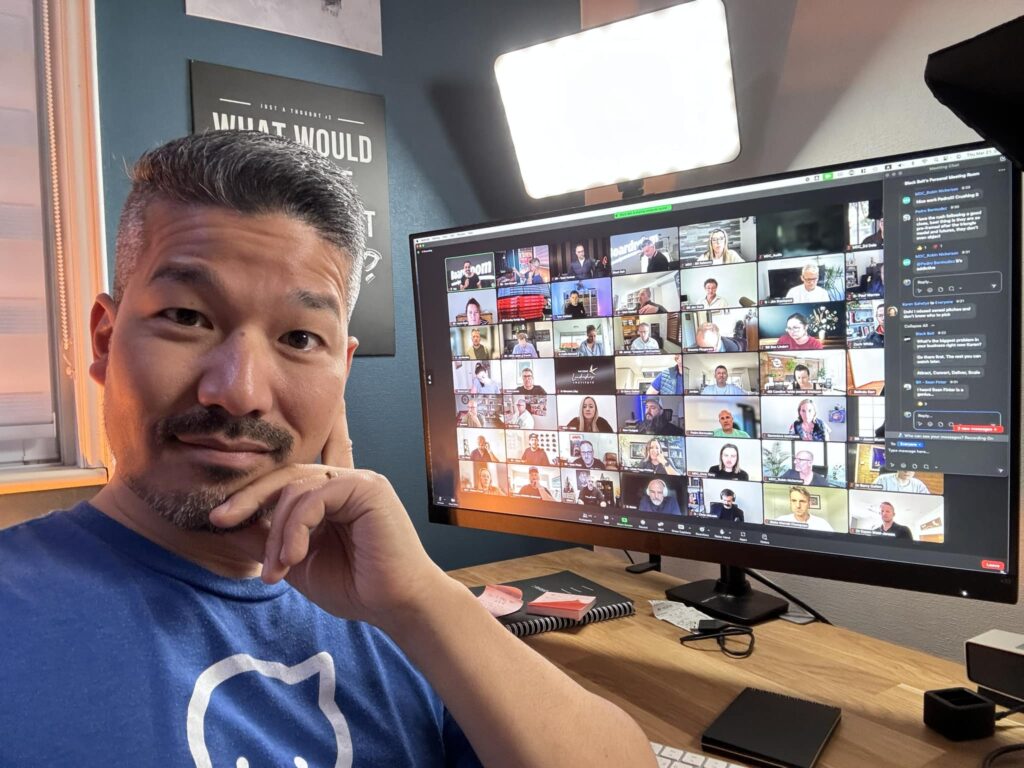
One thing he’s noticed in some instances is a pattern: some people get excited about initial wins, but after a few months, they’re back asking why things aren’t working anymore.
It’s a common story: creators come in, get some traction, and then expect the process to keep working on autopilot. They’re looking for a quick fix, a magic bullet—but what they’re missing is consistency, discipline, and the ability to maintain that momentum.
Ken put it best when he said that many people are chasing instant gratification.
AI tools and automation make things seem easier, but that often creates an illusion of perfection.
The truth is, long-term success requires hard work and a commitment to the process.
It’s not about chasing the next shiny object or relying on the latest trend. It’s about understanding the bigger picture and focusing on what actually works.
Over the years, you’ll see that the creators who succeed are the ones who commit to the grind, put in the reps, and continuously refine their systems.
The 90-Day Benchmark: Spotting Patterns of Winners
After working with creators and entrepreneurs, Ken observes that the first three months often provide a clear indication of long-term success.
“I think within the first 90 days, I’d have a very clear idea on how it’s gonna play out in the next, next two to three years of what? Of their efforts? I think 90 days is a good stretch of time.”

Ken’s approach is rooted in a focus on consistency.
The initial excitement and energy when a creator starts a new video project can be exhilarating, and seeing rapid success early on is often a motivating factor. But this burst of enthusiasm often masks a critical question: Is this their natural rhythm, or just a temporary adrenaline rush?
The biggest challenge Ken also observes is burnout.
Creators who push too hard in the beginning may find themselves depleted as the initial excitement wears off. Without sustained creativity and drive, the quality of content often suffers, engagement drops, and frustration sets in.
This cycle can cause creators to question the effectiveness of their strategy, leading them to seek out new trends or tactics, thinking the old approach no longer works.
The creators who ultimately win are those who stay the course, even when things get tough. They understand that progress may be slow, but they remain committed to the process and focus on building a strong foundation.
Ken Okazaki’s Strategies for Protecting Creativity and Avoiding Burnout
It’s easy to get caught up in the hustle, but protecting your creativity is crucial. I asked Ken how he keeps his energy intact and avoids burnout, especially when balancing multiple responsibilities as a business leader.
“I’ve faced burnout before. I don’t, I can’t say that, I have the magic solution to never burning out because I’ve burned out. But if there’s one thing that helps me. It’s, and I think some people would disagree with this, but it’s, don’t sweat the small stuff.” Ken said.
Ken shared that he experienced burnout firsthand, and while there’s no magic solution to avoid it, he’s found one key principle that helps: don’t sweat the small stuff.
This doesn’t mean ignoring important issues, but learning to prioritize.
For Ken, it’s about picking his battles. Whether it’s an upset client demanding immediate attention or a billing issue, he learned not to solve every problem himself.
Instead, he focuses on the issues closest to him or that only he can handle, then delegates the rest to his team, which I call the DDD (Do-Delegate-Delete) framework.
This mindset allows him to avoid the overwhelming stress of trying to do everything at once.
Real danger of burnout, according to Ken, is when entrepreneurs feel they have to be perfect at everything—creating flawless content, receiving nothing but positive feedback, and ensuring every project runs smoothly.
This illusion of perfection is a surefire way to burn out.
He notes that even the most energetic people, like Tony Robbins, must protect their time and energy. Robbins, for example, now limits himself to speaking on just one or two days of his five-day events, knowing the physical toll it takes on his body.
Ken’s approach is a powerful reminder that in business, as in life, balance is key. By focusing on what truly matters and letting go of the small stuff, he’s able to preserve his energy and stay creative in the long run.
Things That Are Not Obvious About What Ken Okazaki Does
Ken’s work in the video marketing space often gets attention for its success, but there are subtle, less obvious factors that contribute to his ability to drive viral content for his clients.
His deep focus on data is something that most people don’t see.
I asked him things that are not obvious about what he does.
“How much time is spent looking at data? The thing about social media is that when a video flops, any content flops, nobody knows for the very reason that it flopped. And the people notice the ones that are really successful. And the amount of time I spend analyzing data and looking for the patterns that the winning content of individual clients has is sometimes borderline obsessive.” He said.
Ken spends a significant amount of time analyzing video data, searching for patterns that distinguish successful content.
He tracks variables like how many words are spoken in the first 10 seconds, the number of syllables used, and the ratio of face-to-screen visibility. But it’s not just the surface-level metrics—Ken looks closely at factors such as the visibility of the whites of someone’s eyes, which he found to be a critical indicator of video performance.
Ken also speaks candidly about the misconception many business owners have regarding content creation.
Business owners who dabble in influencer marketing often get caught up in the desire for celebrity status, forgetting that their primary goal is to use content as a tool to grow their business and drive more leads, not to become an influencer.
Ken’s ability to remind clients to stay grounded in their expertise, while still leveraging the power of video to generate leads and sales, is one of the keys to his success.
Ken Doing Ken Things: Innovating in Unexpected Ways
A unique aspect of Ken Okazaki’s mindset is his constant pursuit of innovation and improvement.

As he explains, “Ken doing Ken things” is all about creating solutions to problems that nobody else has solved yet.
Ken shared an exciting new project he’s been working on, highlighting his knack for inventing things that fill a gap in the market.
“I created a new computer hub because I could not find one that I needed,” Ken explained. “Instead of using all these troublesome dongles and CAM links, I created a hub with HDMI inputs for 4K video that allows you to plug in professional cameras directly.”
The innovation was born from Ken’s frustration with existing solutions, and rather than just accepting the limitations, he decided to create something better. He’s even working with engineers on designing a prototype, which he plans to release soon.
Ken’s approach to innovation extends beyond just technology.
He’s passionate about finding new hobbies, too. Take snowboarding, for example—Ken took up the sport three years ago and quickly became hooked.
“I got really beat up at first, but I kept going back, and now I snowboard as much as I can,” he said.
Another thing Ken truly enjoys is the process of creating systems and automating them. “It’s exciting when you create a machine that just keeps working,” Ken shared, describing how his agency uses AI tools to automate processes.
It’s a perfect example of Ken’s mindset: dive into something new, get excited about it, and keep pushing forward despite the challenges.
Ken’s Repeatable Advice: Start Simple, Use Your Phone
I asked Ken what pieces of advice he finds himself repeating a lot to people.
“Camera equipment. Like the people come to me and say, what camera should I get? What lens, what like? It’s really simple. It’s to use your phone,” he shared. “And when you get good enough at storytelling and understanding social media, that starts bringing you leads and sales, then use some of that money you made using your phone to reward yourself with some fancy stuff, maybe a $3,000 camera, a $5,000 camera.”
Ken Okazaki finds himself repeating often is striking in its simplicity: Use your phone.
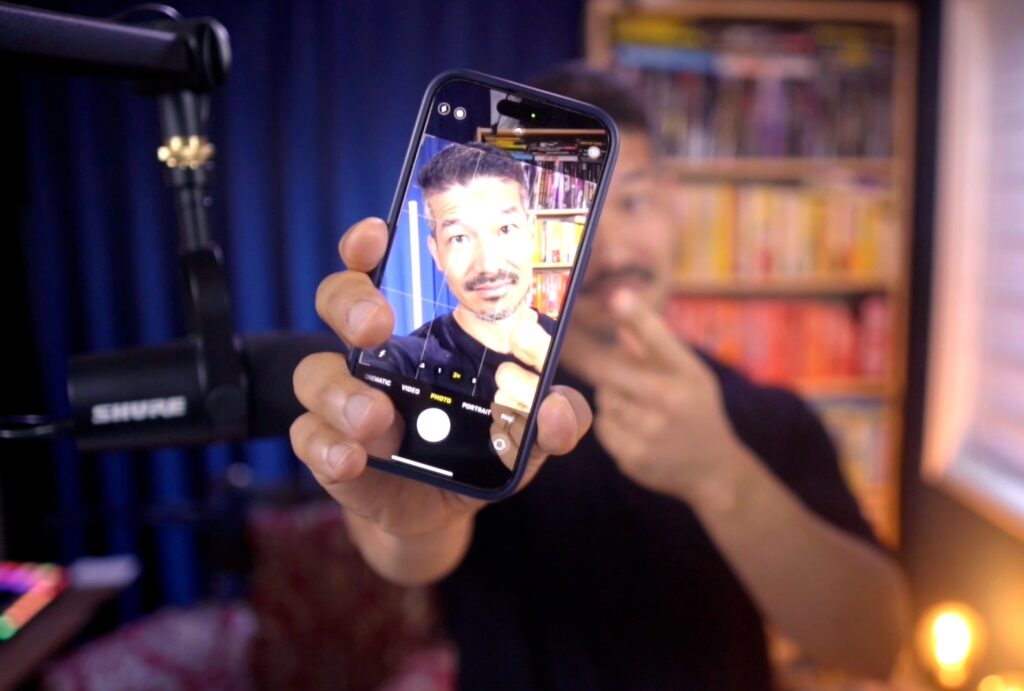
The core of his advice is that aspiring content creators should first focus on learning how to tell compelling stories and mastering the basics of social media before getting distracted by expensive equipment.
Once you’ve developed your skills and begun to drive more leads and sales, then consider upgrading to more sophisticated gear.
Too many creators, Ken notes, make the mistake of buying fancy equipment first, only to find that it becomes a crutch rather than an asset.
The lesson here is clear: start with what you have, then grow from there.
After finding a formula that works, upgrading production value can amplify results.
Winning Formula: Leveraging Your Greatest Hits
Ken’s biggest content hack, which I also believe is essential to success in content creation, is to leverage your greatest hits.
For example, if a video is performing well, why not take it, tweak it, and try again?
This iterative approach is not about reinventing the wheel every time, it’s about enhancing content and improving what already works, maximizing your greatest hits.
Ken’s team has used this principle in high-stakes ad campaigns, where they constantly aim to beat the control. By producing multiple variations of an ad, tweaking small elements like titles or calls to action, they optimize their performance.
This process of testing and optimizing allows for continued progress, and it’s a concept that anyone can apply to their content, regardless of budget or scale.
Start with organic content that performs well, then boost it. The best-performing boosted posts? Turn them into even better-performing ads.
Ken shared a powerful example of how he took a video he shot in a raw, unpolished way through webcam and then reshot it with his team in the Philippines, adding higher production value.
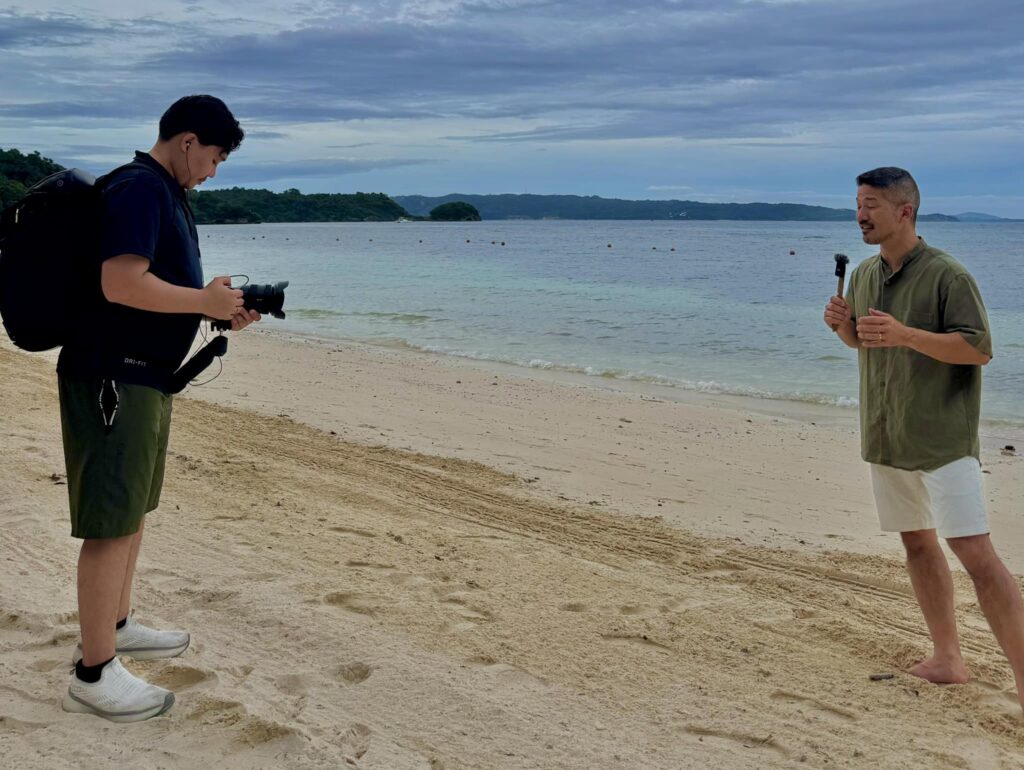
The result was a video that performed eight times better than the original, generating significantly more sales and qualified leads.
It’s a perfect example of how starting with the right content and then enhancing it can yield tremendous results.
What’s On The Mind of Ken Okazaki?
When I asked Ken Okazaki what’s on his mind lately, he said: “How can I do less?“
With all the new tech and tools out there, it’s so easy to add complexity under the guise of simplifying things.
Ken shared a perfect example with AI. He’s diving into AI, custom GPTs, bots, and all these automation tools, thinking they’ll streamline his workflow. But instead, he’s found himself deep in learning mode, exploring new software and systems, and investing more time and effort than he ever imagined.
As Ken said, every single person using AI in their business is innovating and testing things for themselves, and there’s no blueprint to follow. The only way to stay ahead is to be the one experimenting and using yourself as the guinea pig.
He knows that while AI and tech can help solve problems for the masses, the real value comes from solving the unique challenges for his business. It’s a constant process of exploration and testing, but Ken’s committed to staying at the forefront, doing all the experimenting.
The Evolution of Agency Marketing
Ken Okazaki’s real insights in running an agency, video marketing strategies, and AI provide a masterclass in what it takes to keep going and succeed.
He reflected on the broader shifts in the marketing industry. “Life as an agency owner is going to be imperfect no matter what,” he said. “If you want to know what it’s really like to run an agency and a coaching business, and think you need to get past all the marketing hype, you should listen to this.”
There’s no magic formula for success—just hard work, continual learning, and a willingness to adapt to the ever-changing marketing environment.
